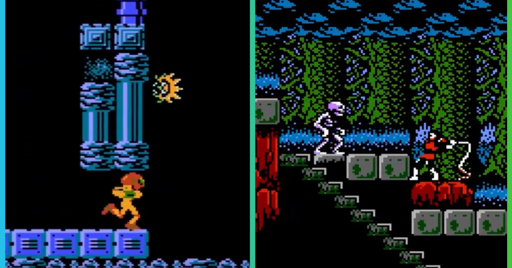Interesting that in the title, stated in absolute terms in the text, and from the designers they interviewed, they cite getting lost as crucial for the genre. Personally, I disagree. Getting lost has tended to be why I didn’t care for certain games in this genre, like Axiom Verge, and it soured my otherwise higher opinion of games like Hollow Knight and Symphony of the Night. Still, I think this is a good exploration of the genre and what makes it tick.



I fundamentally dissagree with the term “metroidvania” because Metroid and Castlevania are different. Both are what I call a “side-scrolling action platformer,” but Metroid gives the player powerups to encourage them to explore their environment, while Castlevanias powerups focus almost entirely on combat. Therefore Metroid includes “adventure” in its genre, but Castlevania does not.
I never got lost in a Metroid game, but I also have a pretty good ability to remember how I got somewhere. Metroid does a generally pretty good job making nearly every room memorable and unique to help players not get lost, and Metroid has mostly included a map to help players as well. If players are still getting lost, IMO that’s just a skill issue.
But I understand what the author is trying to say, and they are right. Actually getting lost is not what they mean, they mean level and game design that lends itself to encouraging exploration by trial and error. Level design and game design that shows the player some impassable wall early and then when they get the ability to pass it later on, leaving it entirely up to the player to remember. Backtracking is a mandatory staple, if a Metroid game has no backtracking, especially for item expansions, then it is not a real Metroid game. Making the player be the one to do the exploring and not holding their hand is crucial to a good Metroid experience. This is why I consider Metroid Fusion, Other M, and Dread to be among the weaker Metroid titles. All three have an obvious, forced always on hand-holding mechanic that you don’t find in other Metroid games. Like the developers don’t trust the player to actually be smart enough to figure the game out.
The “metroids” and the “vanias” do definitely feel different, but the cross section in that Venn diagram is pretty obvious, and that’s what the genre is named for. I prefer the “metroids” to the “vanias”, but even the “vanias” have tons of non-combat upgrades.
Castlevania has
always(edit: I mean since SotN) had a pretty heavy emphasis on movement abilities to access new areas. Looking at SotN, we have double jump, high jump, swimming, mist form, bat form, wolf form, as well as good ol’ keys to literally unlock the environment.I’ll give you Fusion and Other M, but I’m going to have to disagree on Dread here. The game does sort of guide you along an intended first playthrough route, but so does Super! It’s a delicate balance to give the player room for exploration while still ensuring they don’t get stuck not knowing where to go. That balancing act should not be seen as disqualifying, or else we’re throwing out the genre’s foundational text too. If anything, the biggest difference between Dread and Super here is that Dread actually has more developer-intended sequence breaks. If you play Super as intended without utilizing any speedrunning tech, you almost always follow the same route in the end.
The -vania part always seemed a bit odd to me as well because of the history of the games, but it makes sense based on when the term became popularized. If someone had tried to coin a term for the genre earlier I think it would’ve been Metroid-like alone, specifically because the early entries of Castlevania didn’t really have any movement-based mechanics upgrades until SotN. Even things being locked behind item progression was only in Simon’s Quest before that (although it looks like Vampire Killer had some more open levels where you had to find keys). I’m not familiar with Rondo of Blood, which looks like it had some exploration of levels with the secondary character, but again without upgrading movement mechanics.
So you basically had Metroid ('86) and Super Metroid ('94) being quintessential examples of the modern metroidvania genre, whereas there were almost a dozen Castlevanias before SotN ('97) that were mostly linear.
I suppose I should’ve been clearer there, I really just meant the Koji Igarashi-era games, not Classicvania. As the other comment mentions, the term Metroidvania was actually originally coined to separate the two eras of Castlevania, before the genre exploded in popularity and it became repurposed.
But that’s exactly why we have the word metroidvania.
It was sometimes used derisively in forums, but it was to tell apart the likes of Symphony of the Night from the likes of the linear ones. And then as we got more Castlevanias like Symphony of the Night in the GBA era, it became part of the definition of what this genre is.